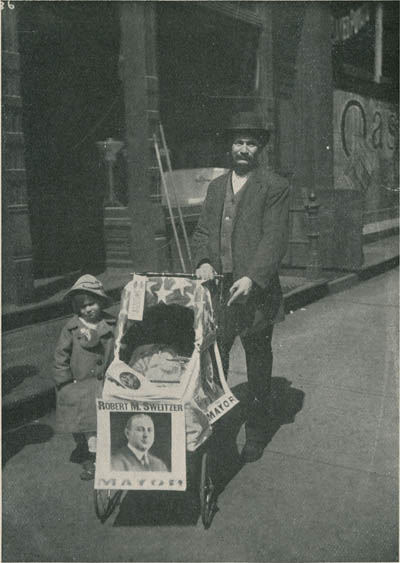Should Women Protest in the Street?
In the 1910s, British suffragists inspired American suffragists to stage public events to attract attention. After a major national suffrage parade in Washington, D.C., in 1913, Boston suffragists organized their own in 1914 and 1915. Suffragists sported yellow roses or sashes, while opponents displayed their pink and red roses. By then, 11 western states had granted women the ballot. The men of Massachusetts voted on whether to enfranchise women in 1915. Only 133,000 men voted for the measure, while almost 325,000 voted to defeat it. Anti-suffragists believed that women should not parade in the streets. Artists caricatured parading suffragists as wild, masculine creatures who aimed to destroy society. For decades, artists had pictured suffragists as women who took over men’s spaces, abandoned their homes, and became aggressive. Protesting suffragists seemed like a nightmare come true.
On 16 October 1915 supporters of suffrage in Boston staged a "Victory Parade" (see link to poster about the event below), just weeks before a vote was held on 2 November 1915 about an amendment that would have removed the word "male" from the articles concerning voting in the Massachusetts Constitution. However, there was no "victory" for woman's suffrage in 1915, when the majority of Massachusetts men voted against changing the voting laws for the state.
 Massachusetts Woman Suffrage Victory Parade : Instructions for Marchers
Massachusetts Woman Suffrage Victory Parade : Instructions for Marchers
Motherhood & Politics
Boston suffragists sold cookbooks to raise money and convince the public that political women really could take care of their homes.
 "Woman's Suffrage"
"Woman's Suffrage"
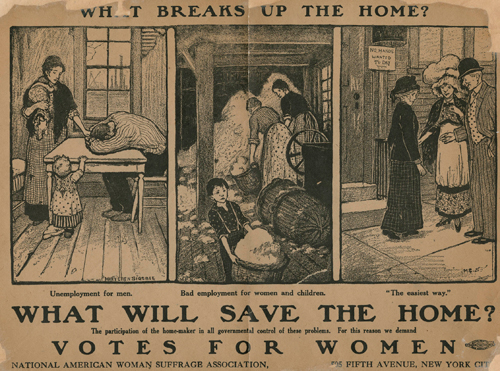 What Breaks Up the Home?
What Breaks Up the Home?
 To the Male Citizen
To the Male Citizen
 Votes for Women: “Let the People Rule”
Votes for Women: “Let the People Rule”
 "Make way!"
"Make way!"
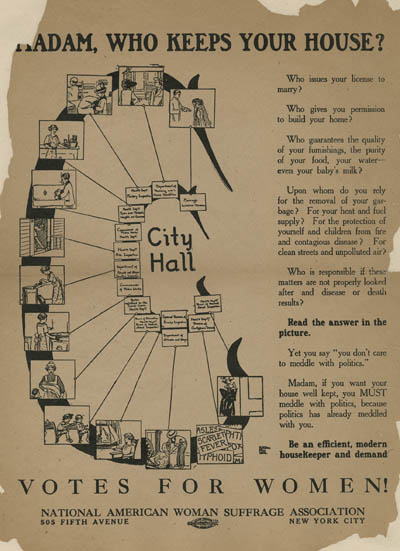 Madam, Who Keeps Your House?
Madam, Who Keeps Your House?
In contrast, local anti-suffragists wanted Americans to believe that female voters would be unhappy and appear masculine. A “Papa Minds the Baby” flyer distributed by the Massachusetts Anti-Suffrage Committee alleged that in Illinois, where women could vote, female voters abandoned their families to campaign. In this anti-suffragists’ dystopia, men would have to care for their children.
The Massachusetts Association Opposed to the Further Extension of Suffrage to Women distributed this poster, "Home", to emphasize that women needed to stay at home. In this picture, a man with his lunch pail arrives home from work. His children are upset because their mother left them alone. On the “Votes for Women” sign, the mother has left a note that she will return later. While suffragists argued that voting mothers would cast ballots to protect their families, their opponents believed that women could not both vote and be good mothers.
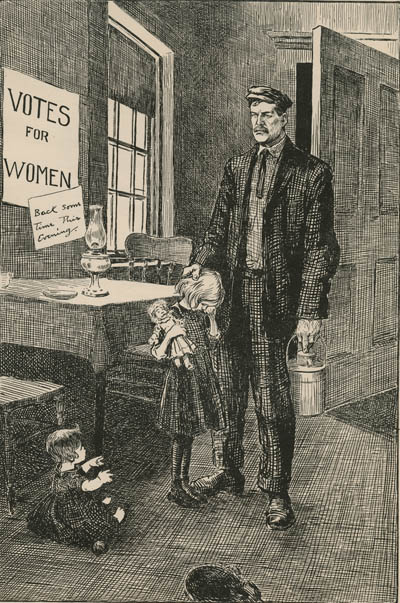 Home!
Home!
 Two sisters of the future : the success the failure
Two sisters of the future : the success the failure
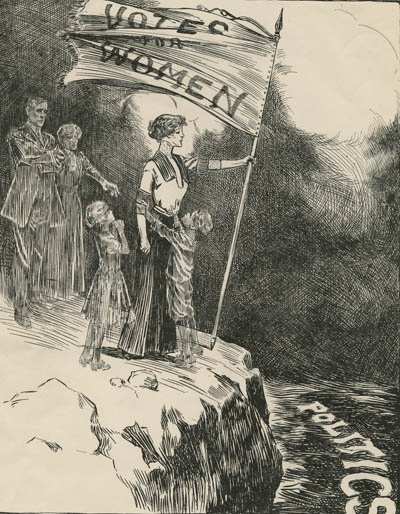 The Pity Of It!
The Pity Of It!



